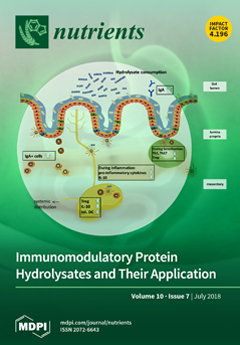Lupinus mutabilis (
LM) is a legume part of Bolivian traditional diet that has a nutraceutical property reducing blood glucose levels. The prevalence of type 2 diabetes is increasing worldwide thus; the search for novel anti-diabetic drugs is needed. Based on its traditional use, we evaluated the anti-diabetic effect of
LM in the spontaneously diabetic Goto-Kakizaki (GK) rat, a model of type 2 diabetes and in Wistar (W) rats as healthy control.
LM seeds hydroethanolic extract, analyzed by gas chromatography-mass spectrometry and high-performance liquid chromatography-high resolution mass spectrometry, is a complex mixture of volatile and non-volatile components. A single oral administration of
LM extract (2000 mg/kg b.w.) improved glucose tolerance during the oral glucose tolerance test (OGTT) (30–120 min) in GK and W rats (
p < 0.0001). The long-term treatment with
LM (1000 mg/kg b.w.), for 21 days, improved the area under the curve (AUC) of glucose during OGTT at day 20, in both GK (
p < 0.01) and W rats (
p < 0.01). The HbA1c (GK rats,
p < 0.05 and W rats,
p < 0.0001) and the non-fasting glucose (GK rats,
p < 0.05) were also reduced.
LM increased both serum insulin levels (2.4-fold in GK rats and 2.5-fold W rats), and the glucose-induced (16.7 mM glucose) insulin release in isolated islets from treated animals (6.7-fold in GK rats, and 6.6-fold in W rats). Moreover,
LM (10 mg/mL) stimulated
in vitro glucose induced (16.7 mM glucose) insulin release in batch incubated GK and W rat islets (
p < 0.0001). In perifused GK rat islets, insulin release in 16.7 mM glucose was increased 95.3-fold compared to untreated islets (
p < 0.0001), while no significant differences were found in perifused W rat islets. The
LM mechanism of action, evaluated using inhibitory compounds of the insulin secretion pathway, showed that
LM-dependent insulin secretion was reduced 42% by diazoxide (
p < 0.001), 70% by nifedipine (
p < 0.001), 86.7% by H89 (
p < 0.0001), 70.8% by calphostine-C (
p < 0.0001) and 93% by pertussis toxin (
p < 0.0001). A similar effect was observed in W rats islets. Our findings provide evidence that
LM has an anti-diabetic effect through stimulation of insulin release. The effect is-dependent on L-type calcium channel, protein kinase A and C systems, and G protein-coupled exocytosis and is partially mediated by K-ATP channels.
Full article






